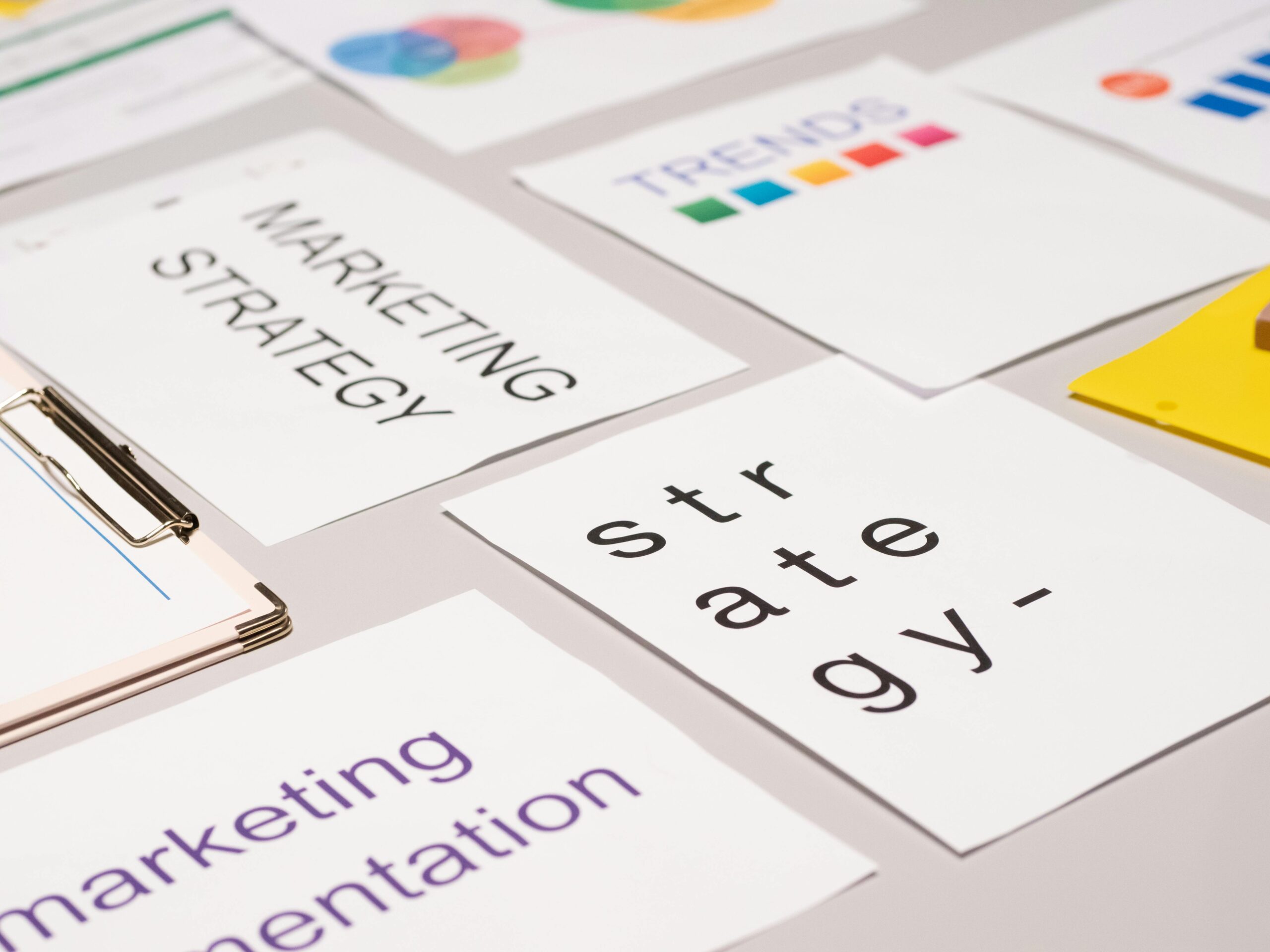Buying SEO leads can be a smart move for agencies and freelancers looking to grow fast — but only if you do it right. 🚀 In today’s competitive digital market, not all leads are created equal. If you’re wondering how to avoid the junk and get leads that actually convert, you’re in the right place. In this blog, we’ll walk you through practical tips to buy SEO leads that bring real results, so you can save time, close more deals, and grow your business without chasing unqualified prospects. 🎯 1. Know Your Ideal Client First Before you even think about purchasing leads, take the time to define your ideal client. 👥 Are you targeting small local businesses, eCommerce companies, or law firms? Knowing your niche will help you filter out irrelevant leads and focus only on those who are more likely to convert. ✅ Make a list of: The more specific you are, the more valuable your purchased leads will be. 2. Choose a Reputable Lead Provider One of the most important tips to buy SEO leads that bring real results is choosing the right source. Not all lead providers are trustworthy or deliver real-time, verified data. ❌ Buying cheap leads from unknown sources often means you’ll waste time chasing businesses that aren’t even interested in SEO. Look for providers who: 🛠️ A few reputable platforms to explore include WebsiteSeoLeads, UpLead, and Fiverr Pro vetted sellers. 3. Ask Questions Before You Buy A reliable lead provider should be open about what you’re getting. Don’t be afraid to ask: The answers will help you gauge if the leads are worth the investment or just names on a list. 🔍 4. Focus on Exclusive Leads One of the biggest problems with cheap lead services is that they often sell the same lead to multiple buyers. 😖 If you want real results, go for exclusive leads that are only shared with you. Yes, they cost more, but you’ll be talking to a potential client who hasn’t already heard five other pitches before yours. That’s a huge advantage. 5. Have a Lead Follow-Up System in Place Even the best lead is useless if you don’t follow up correctly. ☎️ Make sure you have a system ready to reach out as soon as you receive the lead. That could include: ⏱️ Speed matters — studies show that following up within 5 minutes boosts your chances of a conversion by over 9x. 6. Test Before You Scale Start small before buying leads in bulk. 📈 Purchase a small batch and measure results: Use this data to calculate your cost per acquisition and determine if scaling is worth it. If not, you may need to switch providers or refine your targeting. 7. Monitor Quality Over Quantity When it comes to lead generation, more isn’t always better. A smaller list of well-qualified leads will always beat a large list of uninterested businesses. 🙌 Track your leads’ performance: By keeping tabs on what works, you can optimize your buying strategy for maximum ROI. 8. Consider Combining with Inbound Efforts Buying leads can be powerful, but it works even better when paired with a strong inbound strategy. 💡 Use content marketing, SEO, or ads to nurture your list and warm them up before outreach. That way, even purchased leads start to feel like they found you, not the other way around. Final Thoughts If you follow these tips to buy SEO leads that bring real results, you’ll be well on your way to building a client list full of high-intent businesses. 🏆 The key is to buy smart, act fast, and stay focused on quality over quantity. Remember, buying leads isn’t a magic trick — it’s a shortcut to start real conversations with the right people. Pair it with strong outreach and a solid service offering, and your agency will grow faster than ever. Ready to stop chasing cold leads and start closing warm ones? 🔥 Explore verified lead providers like WebsiteSeoLeads and take the first step toward consistent, scalable growth.
Best Ways to Find Web Design Leads Quickly 🚀
If you’re a web designer or run a web design agency, one of the biggest challenges is finding quality leads fast. The digital market is competitive, and waiting for clients to come to you organically can take time ⏳. But don’t worry! There are proven ways to find web design leads quickly and efficiently, so your business keeps growing without long gaps between projects. In this blog, we’ll explore some of the best ways to find web design leads quickly, helping you connect with the right clients and scale your services with confidence. 1. Use Targeted Online Platforms 🎯 Web design leads are often looking for professionals on specific platforms. Websites like Upwork, Fiverr, and Freelancer are great places to find clients actively seeking web design help. These platforms allow you to showcase your portfolio, bid on projects, and communicate directly with prospects. Additionally, specialized job boards like WeWorkRemotely or AngelList often have startups and businesses seeking website design services. Being active on these sites can connect you with leads ready to hire. 2. Leverage Social Media for Lead Generation 📱 Social media isn’t just for sharing fun moments—it’s a powerful tool for finding leads. Platforms like LinkedIn, Instagram, and Facebook can help you showcase your work and attract clients. For instance: Regularly posting and interacting with followers helps build a community that could turn into paying clients. 3. Optimize Your Website for Lead Capture 🌐 Your own website should be your top lead generation asset. Make sure your site clearly shows what you offer, includes a portfolio, and most importantly, has easy ways for visitors to contact you. Use clear call-to-action (CTA) buttons like “Request a Free Quote” or “Book a Consultation.” Adding lead magnets such as free guides (“10 Tips for a Better Website”) can encourage visitors to share their contact details. Don’t forget SEO! Optimize your site for keywords your potential clients might use, like “affordable web design” or “professional website designer near me.” 4. Network Locally and Attend Events 🤝 Even in our digital world, face-to-face networking can quickly lead to solid web design leads. Attend local business meetups, industry conferences, and workshops. Meeting entrepreneurs and business owners in person allows you to explain your services and build trust instantly. You can also offer to speak at events or host free workshops on web design basics. This positions you as an expert and naturally attracts interested leads. 5. Partner with Other Agencies and Freelancers 🤝 Collaborations can open doors to leads you might not find on your own. Partner with marketing agencies, SEO specialists, or content creators who don’t offer web design but have clients that need it. You can create referral agreements where you send leads back and forth or work on joint projects. This expands your network and lead pool quickly. 6. Use Paid Advertising to Target Ready-to-Buy Clients 💰 If you want to find web design leads quickly, paid ads can be highly effective. Platforms like Google Ads and Facebook Ads allow you to target people actively searching for web design services. You can create ads offering a free consultation, limited-time discounts, or showcasing your portfolio. Paid campaigns give instant visibility to your business and can drive high-intent leads straight to your website or landing page. 7. Collect and Showcase Testimonials and Case Studies 🏆 Potential clients love proof that you can deliver results. Collect testimonials from past clients and create case studies highlighting how your web design improved their business. Showcasing social proof on your website and social media builds trust and convinces leads to contact you faster. 8. Use Email Outreach and Follow-Up 📧 Sometimes leads need a little nudge. Building an email list and sending personalized outreach can generate quick responses. Research businesses that might need a website update or redesign, then send them a concise email offering your help. Following up politely if you don’t get a response initially can improve your chances. Keep your messages focused on how you can solve their problems, not just selling your services. Final Thoughts Finding web design leads quickly doesn’t have to be complicated or overwhelming. By combining online platforms, social media marketing, your own website optimization, and real-world networking, you can build a steady pipeline of quality leads. Remember, it’s not just about quantity but the quality of leads you get. Focus on connecting with clients who value your expertise and are ready to invest in great web design. If you want to accelerate your lead generation process and get the best web design leads fast, consider partnering with experts like WebsiteSeoLeads who specialize in delivering qualified leads directly to you. Ready to boost your business? Start applying these strategies today and watch your client list grow! 🚀✨ WebsiteSeoLeads
Social Media Content Ideas for Agencies and Freelancers 🚀
Social media has evolved into a powerful tool for growing businesses 📱. For agencies and freelancers, it’s a gateway to building authority, connecting with clients, and generating leads. But consistently coming up with creative content? That’s a whole different challenge 😅. If you’re tired of staring at a blank screen wondering what to post, this blog is for you. Here are practical and effective social media content ideas for agencies and freelancers that will help you engage, grow, and convert your audience. 1. Show Off Your Work 📸 People want proof that you can deliver. Sharing your portfolio or client projects is a great way to earn credibility and showcase your talent. 👉 What to post: Real results build real trust. Let your work do the talking. 2. Educate Your Audience 🎓 Sharing tips and tricks not only helps your audience but positions you as an expert. Educational content often gets saved and shared—expanding your reach. 👉 What to post: Educational content is evergreen. It provides value and keeps followers coming back for more. 3. Highlight Client Success Stories 🧩 Your past success can be the strongest form of marketing. Use social proof to your advantage. 👉 What to post: Success stories serve as testimonials and build confidence in your services. 4. Behind the Scenes 🎬 Show the human side of your business. People love to see who they’re working with. 👉 What to post: It builds transparency and makes your brand feel approachable and relatable. 5. Talk About Industry Trends 📰 Keep your followers informed about the latest in marketing, social media, or design. Being a source of relevant news sets you apart. 👉 What to post: Sharing your take shows leadership and thoughtfulness. 6. Ask Questions and Run Polls 🗳️ Boost engagement by making your content interactive. People love giving their opinions. 👉 What to post: It helps you understand your audience and increases interaction. 7. Answer FAQs and Bust Myths ❓ You know the questions your clients always ask. Use that insight to inform your posts. 👉 What to post: Educating your audience makes you the go-to expert they trust. 8. Celebrate Wins and Milestones 🏆 Let people in on your journey. Sharing progress builds connection and shows growth. 👉 What to post: Milestone posts spark positivity and show momentum. 9. Share Freebies and Tools 🎁 Offering value upfront builds goodwill and gives your followers a reason to stay connected. 👉 What to post: Lead magnets are a tried-and-true way to grow your list and nurture relationships. 10. Promote Your Services Softly 💼 While value should be the focus, don’t forget to remind people what you offer. 👉 What to post: Subtle sales messages paired with value content lead to trust—and conversions. Wrapping It Up 🎯 With these social media content ideas for agencies and freelancers, you won’t run out of inspiration any time soon. Start by picking a few content types that feel most natural to you and schedule them consistently. Track what works best, and adjust based on performance. Social media success doesn’t come overnight, but with the right content strategy, you’ll build a loyal audience, attract leads, and grow your business—all without burning out trying to figure out what to post next. 💡 Pro Tip: Use scheduling tools like Later, Buffer, or Planoly to keep your posting consistent without having to be online 24/7. Need help creating or executing a content plan for your business? Contact us today—we’re here to help agencies and freelancers like you win on social media! 🚀 WebsiteSeoLeads
How to Create a 30-Day Social Media Content Plan 📅📲
Are you struggling to stay consistent with your social media posts? Do you often feel overwhelmed by the need to come up with new ideas every day? If yes, you’re not alone. Many businesses and creators face this challenge — but the solution is simple: planning ahead. In this guide, we’ll walk you through how to create a 30-day social media content plan that saves time, improves consistency, and drives engagement 📈. Why You Need a 30-Day Plan 📌 Creating a month-long content calendar might seem like a lot of work, but it’s a game-changer. With a proper plan, you: When you understand how to create a 30-day social media content plan, you gain clarity and control over your messaging. Step 1: Set Clear Goals 🎯 Before jumping into content ideas, define what you want to achieve. Are you aiming to: Your goals will shape the type of content you produce. For example, educational content builds authority, while entertaining content increases shares and likes. Step 2: Identify Your Audience 👥 Knowing your audience is crucial. Ask yourself: When you tailor your content to your audience’s preferences, it performs better and fosters loyalty. Understanding your audience is a critical part of mastering how to create a 30-day social media content plan. Step 3: Choose Your Platforms 📱 Not all platforms serve the same purpose. Choose based on where your audience spends time: Stick to 1–3 platforms to avoid burnout. Step 4: Create a Content Mix 🧃 Variety keeps your content fresh and your audience engaged. Here’s a sample mix you can rotate over the month: Having this mix ensures your feed doesn’t look like a sales pitch and appeals to different segments of your audience. Step 5: Plan Weekly Themes 📆 To simplify the process, assign each week a theme. For example: This helps you stay focused and maintain consistency across posts. It also makes it easier to come up with content ideas. Step 6: Use a Calendar or Tool 🗓️ Once you’ve got your content types and themes, plot them into a content calendar. You can use: This visual layout gives you a clear view of what’s being posted and when — the backbone of how to create a 30-day social media content plan. Step 7: Create Content in Batches 🧑💻 Batching means setting aside a block of time to create multiple posts at once. For example: Batching saves time and keeps your content cohesive. Step 8: Schedule and Automate ⏰ After creating your content, schedule it in advance using tools like: Automation ensures your content goes out consistently — even if you’re busy. Step 9: Monitor Performance 📊 Just posting isn’t enough. Check analytics to understand what’s working: Adjust future plans based on this data. This feedback loop is key in mastering how to create a 30-day social media content plan that evolves and improves. Step 10: Stay Flexible 🌀 Planning ahead is great, but social media trends change fast. Be prepared to adjust your plan if something relevant happens (like news, trends, or viral content). Also, engage with your audience in real time by responding to comments, messages, and shares. Final Thoughts 🌟 Learning how to create a 30-day social media content plan is one of the best ways to build consistency, boost engagement, and reduce content stress. With clear goals, a smart content mix, and the right tools, you’ll be well on your way to managing your social media like a pro. Ready to grow your brand on social media? Start planning today — and if you need help crafting your content or running ads, feel free to reach out! 📩 WebsiteSeoLeads
Top Website Design Trends to Follow This Year 🚀
In today’s fast-paced digital landscape, your website isn’t just your online address—it’s your brand’s first impression, your digital handshake, and often the first place customers decide whether or not to engage with you. To keep visitors interested and coming back, it’s crucial to stay updated with the Top Website Design Trends to Follow This Year 🖥️. Design trends are more than just what’s visually pleasing—they impact user experience, conversion rates, and how well your site performs on search engines. So let’s explore the design elements and strategies that are making waves in 2025. 1. Dark Mode and Low-Light UX 🌑 Dark mode isn’t new, but it continues to rise in popularity. With more users preferring interfaces that are easy on the eyes, websites that offer a dark mode or low-light environment provide a modern, sleek feel. It’s also energy-efficient for OLED screens and looks stunning when paired with neon or bright accents. 2. Minimalist, Clean Interfaces ✨ Minimalism is here to stay. A clutter-free layout not only looks elegant but also improves user navigation and site speed. White space (or negative space) is being used more strategically, allowing users to focus on key information without distraction. This trend complements mobile responsiveness perfectly. 3. Micro-Animations and Interactions 🌀 Small, purposeful animations create a dynamic and engaging experience. From hover effects to loading animations and interactive elements, these micro-interactions can guide users intuitively through your site. The trick is to use them tastefully—less is more when it comes to motion. 4. Custom Illustrations and Unique Visuals 🖌️ Brands are moving away from generic stock photos and embracing custom illustrations and bespoke graphics. Hand-drawn visuals, animated SVGs, and brand-specific icons are used to add personality and uniqueness. This approach not only makes your brand memorable but also supports storytelling. 5. AI-Powered Personalization 🤖 As artificial intelligence becomes more accessible, websites are integrating AI to deliver personalized experiences. From product recommendations to dynamic content based on user behavior, personalization boosts engagement and conversions. It’s one of the most impactful trends in the Top Website Design Trends to Follow This Year. 6. Voice Search Optimization 🔊 With smart devices and voice assistants on the rise, optimizing your website for voice search is no longer optional. This means structuring your content clearly, using conversational keywords, and ensuring fast load times. While not a visual trend, it’s essential in modern design thinking. 7. Full-Screen Hero Sections 📸 Say goodbye to traditional sliders and hello to bold, full-screen hero images or videos. These sections immediately grab attention and communicate your message clearly. Paired with a strong call-to-action (CTA), they set the tone for the rest of the website. 8. 3D Elements and Immersive Experiences 🧱 Thanks to advancements in technology and web performance, 3D elements are now more common in web design. Whether it’s product displays, animated logos, or interactive visuals, 3D graphics help create a memorable and immersive user experience. 9. Bold Typography and Unique Fonts 🔠 Typography is taking center stage this year. Designers are using oversized, expressive fonts and variable typography to highlight messages and create visual hierarchy. It’s a simple yet powerful way to make your brand voice stand out. 10. Accessibility-First Design ♿ Accessibility isn’t just a trend—it’s a necessity. More websites are prioritizing accessible design to ensure all users, including those with disabilities, can navigate and interact with their site. From keyboard navigation to screen-reader compatibility, accessibility is becoming a standard in modern design. Why These Trends Matter 📈 Following the Top Website Design Trends to Follow This Year is not just about looking modern. It’s about improving user experience, staying competitive, and aligning with the expectations of today’s digital consumer. A well-designed website builds trust, enhances engagement, and ultimately drives more conversions. When users land on a site that feels modern, loads fast, and is easy to navigate, they’re more likely to stay, explore, and act. On the other hand, outdated or confusing layouts can drive them away—fast. Tips to Implement These Trends on Your Website 🔧 Final Thoughts 💡 Keeping your website aligned with the Top Website Design Trends to Follow This Year will help your brand stay relevant, appealing, and user-friendly. Whether you’re updating a few elements or planning a full redesign, focusing on trends that enhance usability and engagement is always a smart move. Want help modernizing your website or improving user experience? Reach out to our team at WebsiteSeoLeads—we specialize in creating stunning, high-performing websites tailored to your business goals. WebsiteSeoLeads
The Importance of Mobile Optimization in 2025 📱🚀
As technology continues to evolve, one thing has become increasingly clear: mobile is no longer the future—it’s the present. In 2025, more people are using their smartphones to browse, shop, and connect than ever before. That’s why the importance of mobile optimization in 2025 cannot be overstated. From user experience to SEO rankings and conversion rates, a mobile-optimized website is no longer optional—it’s essential for survival and success in today’s digital landscape. Why Mobile Optimization Matters More Than Ever in 2025 📊 We’re in an age where over 70% of global web traffic comes from mobile devices. Whether someone is searching for a local service, reading a blog, or making an online purchase, chances are they’re doing it from their phone. If your website isn’t optimized for mobile users, you’re likely losing potential customers every day. In 2025, user expectations are higher. Slow load times, unclickable buttons, and poor design can cause users to abandon your site within seconds. That lost visitor might have been your next big client or sale. Google’s Mobile-First Indexing 📈 One of the key reasons the importance of mobile optimization in 2025 is growing is because of Google’s mobile-first indexing. This means Google predominantly uses the mobile version of the content for indexing and ranking. If your mobile site is not up to par, your visibility in search results will take a hit. Google now rewards mobile-friendly websites with higher rankings, which means if your competitors are optimized and you’re not—you’re falling behind. Enhanced User Experience Equals Higher Conversions 💰 User experience (UX) is everything in 2025. A mobile-optimized website provides a smooth, fast, and enjoyable browsing experience. This includes: When users enjoy navigating your website, they’re more likely to stay longer, explore more pages, and take action—whether that’s filling out a form, making a purchase, or contacting your business. Mobile Shopping Is Booming 🛍️ With platforms like Shopify, Instagram Shopping, and mobile-friendly payment gateways, mobile commerce (m-commerce) has exploded in 2025. People prefer the convenience of shopping from their phones. If you run an e-commerce business, having a mobile-optimized site directly impacts your sales. Features like one-click checkouts, mobile wallets, and personalized recommendations work best on optimized platforms. Ignoring this means leaving money on the table. Mobile Optimization Supports Voice Search 🎙️ Voice search is another factor pushing the importance of mobile optimization in 2025. With more users speaking into their phones to search online, your website needs to load quickly and deliver relevant answers. A mobile-friendly site combined with proper SEO helps you appear in voice search results, giving you a competitive edge in a rapidly growing trend. Social Media Drives Mobile Traffic 📲 Most people access social media through their smartphones. When users click your links from platforms like Facebook, Instagram, or LinkedIn, they’re viewing your website on their phone. If it doesn’t look or function properly, they’ll bounce—and probably won’t come back. Your mobile optimization strategy should include social media sharing compatibility, fast mobile landing pages, and mobile-friendly content layouts to keep that traffic engaged. Don’t Forget About Local SEO 📍 If you run a local business, optimizing for mobile is especially important. People searching for “coffee near me” or “best plumber in [city]” are doing so on their phones—and usually making decisions quickly. A mobile-friendly site that loads fast, displays contact info clearly, and has tap-to-call features can make or break that moment when someone decides whether to call you or your competitor. How to Optimize Your Site for Mobile in 2025 🔧 Now that you understand the importance of mobile optimization in 2025, here are a few practical steps to get started: Final Thoughts 💬 In the fast-paced, mobile-first digital world of 2025, businesses can’t afford to neglect mobile optimization. From SEO to conversions and user satisfaction, a mobile-friendly website plays a vital role in online success. The importance of mobile optimization in 2025 lies not just in staying competitive, but in staying relevant. By prioritizing mobile, you’re meeting your audience where they are—and delivering an experience that builds trust, drives results, and sets your business up for long-term success. 📞 Ready to make your website mobile-friendly? Contact us today for a full mobile optimization audit and get your business ahead in 2025! WebsiteSeoLeads
How to Avoid the Spam Folder with Your Emails
Email marketing is still one of the most powerful tools for engaging your audience and converting leads into paying customers. But what happens when your emails never reach their inbox? That’s the nightmare of every marketer — the dreaded spam folder. 😩 If you’re wondering how to avoid the spam folder with your emails, you’re not alone. Spam filters are stricter than ever, and even legitimate businesses can get caught in their web. The good news is, there are proven strategies you can use to boost your email deliverability and keep your campaigns out of spam. Here’s what you need to know to make sure your emails land right where they belong — the inbox! 📥 ✅ Use a Verified Email Address One of the first and most important steps in how to avoid the spam folder with your emails is to send from a verified email domain. Instead of using free services like Gmail or Yahoo, use a custom domain that matches your brand. For example, use yourname@yourbusiness.com. Set up proper DNS records like SPF, DKIM, and DMARC. These protocols tell email providers your messages are coming from a trusted source. Without them, your chances of landing in spam skyrocket. 🚀 📝 Avoid Spam Trigger Words Spam filters scan your subject line and body for common red-flag words. If your email sounds too salesy, it could be flagged. Try to avoid phrases like: Instead, keep your language natural and helpful. Focus on what value you’re offering rather than trying to pressure the recipient. 🧠💡 📩 Get Permission First Never — and we mean never — buy email lists. Not only does it hurt your sender reputation, but it’s also a great way to land in the spam folder (and possibly get blacklisted). 😬 Always collect emails through opt-in forms, newsletters, lead magnets, or webinars. This way, people expect your emails, and the chances of engagement are much higher. 🛠️ Clean Your Email List Regularly Even if you collected your leads the right way, not all of them will stay active. If you keep sending emails to people who never open them, it signals to email providers that your content isn’t valuable — which increases your spam score. 📉 Use your email marketing tool to: A clean list is a healthy list. 🧼 📱 Make Your Emails Mobile Friendly Over 60% of emails are opened on mobile devices. If your email isn’t mobile optimized, people might delete it — or worse, mark it as spam. 📲 Make sure to: The easier it is to read and navigate, the better your engagement metrics — and your inbox placement. 🧪 Test Before You Send One of the smartest moves in how to avoid the spam folder with your emails is to test your emails before blasting them out. Many platforms offer spam score testing tools that analyze your content and flag any risky elements. 🧪 You can also send test emails to yourself using different email providers (like Gmail, Outlook, Yahoo) to see where they land. If it ends up in spam, it’s a sign to revise your content or sender settings. 📊 Track Engagement Metrics Mailbox providers use your engagement rates to judge whether your emails are useful or spammy. So, improve those open and click-through rates by: When recipients engage, it builds trust with inbox filters. 📈💬 🙋 Make It Easy to Unsubscribe This may sound counterintuitive, but having a clear and easy unsubscribe link actually helps with your deliverability. If people can’t find the unsubscribe button, they’ll mark you as spam — which is far worse. 😖 Always include a visible unsubscribe link at the bottom of your emails, and respect unsubscribe requests immediately. 🛡️ Build and Maintain a Good Sender Reputation Your sender reputation is like your email credit score. If you send quality emails to engaged audiences, your score goes up. But if you’re constantly marked as spam, your reputation — and deliverability — take a hit. 🛡️ Use trusted email marketing platforms, avoid shady practices, and always focus on quality over quantity. Final Thoughts Mastering how to avoid the spam folder with your emails isn’t about tricking the system — it’s about sending valuable, trustworthy, and relevant messages to people who actually want them. 🙌 Follow the tips above to improve your email reputation, boost engagement, and make sure your marketing efforts pay off. Remember, every email that lands in the inbox is a new opportunity for connection and conversion. 💌 Need help building a winning email strategy or cleaning up your list? Reach out to us — we’re here to help you grow your business with smarter marketing. 🚀 WebsiteSeoLeads
Should You Buy Leads or Generate Them Yourself
In the world of digital marketing and business growth, one common dilemma often arises: Should You Buy Leads or Generate Them Yourself? 🤷♂️ Whether you’re a startup agency or a seasoned business owner, figuring out the best way to get high-quality leads is key to growing your client base and boosting revenue. In this post, we’ll explore the pros and cons of both options so you can make an informed decision that fits your business goals and budget. What Are Leads, and Why Do They Matter? 🎯 Before diving into the debate, let’s clarify what we mean by “leads.” A lead is someone who shows interest in your product or service. In digital marketing, leads are often people who’ve filled out a form, clicked on an ad, or visited your website. High-quality leads are those more likely to become paying customers, making them essential for a healthy sales pipeline. Buying Leads: Fast Results, But at What Cost? 💸 One of the most tempting options for businesses, especially newer ones, is to buy leads. Companies and platforms sell access to lists of people or businesses that supposedly fit your target audience. Pros of Buying Leads ✅ Cons of Buying Leads ❌ 👉 Buying leads might offer short-term results, but they often come at the cost of quality and brand trust. Generating Your Own Leads: Slow and Steady Wins the Race 🐢💼 Now let’s look at the other side of the coin. Generating your own leads means building interest through your own marketing efforts—whether via SEO, content marketing, email campaigns, or social media. Pros of Generating Your Own Leads ✅ Cons of Generating Your Own Leads ❌ 👉 Generating your own leads takes more time and effort, but it often pays off with better engagement and conversions. Which Option Is Right for You? 🧩 Let’s break it down based on your business stage and goals. You Should Buy Leads If: You Should Generate Leads Yourself If: Combining Both Approaches: A Smart Middle Ground 🧠⚖️ Some businesses find success by using a hybrid strategy. For example, you could buy leads to jumpstart your pipeline while also building out an organic lead generation funnel. Use data and feedback from paid leads to improve your targeting and messaging, then apply those insights to your own campaigns. Tools like: can help streamline and automate the process, whether you’re buying or generating leads. Final Thoughts 💬 So, Should You Buy Leads or Generate Them Yourself? The answer depends on your business goals, timeline, and resources. If you need instant results and can handle cold outreach, buying leads might be useful in the short term. But if you’re building a sustainable, trustworthy brand, generating leads yourself is often the more rewarding path. 🌱 Whichever route you choose, the key is to focus on quality and value. Educate your prospects, offer genuine solutions, and always put the customer experience first. ✨ Want help generating qualified SEO and marketing leads? Reach out to our team and let’s grow your business the smart way! WebsiteSeoLeads
Does Domain Authority Still Matter in 2025? 🤔
In the fast-changing world of digital marketing, one question continues to pop up: Does Domain Authority Still Matter in 2025? With new ranking factors and search algorithms constantly evolving, many marketers and website owners are wondering if Domain Authority (DA) is still worth tracking. Let’s break it down and find out what DA means today and how it fits into your SEO strategy in 2025 📊. What Is Domain Authority? 🧠 Domain Authority is a scoring system developed by Moz that predicts how likely a website is to rank on search engine result pages (SERPs). The score ranges from 1 to 100 — the higher the score, the more “authoritative” your site is perceived to be by search engines. It’s based on multiple factors, including: However, it’s important to note that DA is not a ranking factor used by Google. It’s a third-party metric used as an indicator or comparison tool. Why People Still Care About Domain Authority in 2025 📌 So, Does Domain Authority Still Matter in 2025? The answer is yes — but with context. Even though Google doesn’t use DA in its algorithms, marketers, SEO professionals, and businesses still rely on it to: Think of DA as a “trust score” that helps you benchmark progress and assess potential link-building targets. How Domain Authority Impacts SEO Strategy ⚙️ While DA won’t directly impact your Google ranking, it often reflects important SEO fundamentals. A website with high DA usually has: If you’re investing in improving your DA, chances are you’re also improving your site’s technical health and content — both of which support better rankings and user experience. 📈 Has Domain Authority Lost Relevance in 2025? 🕵️ With the rise of AI-generated content, Google’s Experience-Expertise-Authoritativeness-Trust (E-E-A-T) guidelines, and user behavior metrics becoming more sophisticated, some argue that DA is losing relevance. But the truth is, Does Domain Authority Still Matter in 2025? It does — as a guide, not a goal. It should never be your only SEO metric, but it remains useful when: So while DA is no longer the “kingpin” it once was in SEO conversations, it still plays a supporting role in your digital strategy. What to Focus on More Than DA in 2025 🔍 If you’re trying to grow your website or agency’s presence, here are some other SEO priorities to focus on: These factors influence rankings directly — and improving them will often raise your DA as a side effect 📈. Practical Tips to Improve Your DA (and SEO) in 2025 💡 If you still want to keep your Domain Authority strong, here are actionable tips that will benefit both DA and real SEO results: So, Does Domain Authority Still Matter in 2025? ✅ The bottom line is that Domain Authority still holds value, but not as a definitive measure of success. Does Domain Authority Still Matter in 2025? Yes — as a tool, not a target. Focus on what DA represents: trust, authority, and quality. By working to improve the core elements of your website, you’ll naturally see your DA rise — and more importantly, you’ll rank better, attract more visitors, and convert more leads 🚀. Final Thoughts 💭 SEO in 2025 is about being smart, human-centered, and value-driven. Don’t obsess over your Domain Authority score, but don’t ignore it either. Use it as one of many tools in your digital toolbox. Want help improving your SEO performance or building high-authority backlinks? Let’s talk! Our team is ready to help you grow your rankings with proven, modern strategies. 📧 Contact us today and take your website’s authority to the next level! WebsiteSeoLeads
How to Create a High-Converting Ad Funnel
In the fast-paced world of digital marketing, it’s not enough to run ads—you need a strategy that actually converts. That’s where an ad funnel comes into play. Knowing how to create a high-converting ad funnel can transform your marketing efforts and maximize your ROI 📈. Whether you’re new to funnel building or trying to improve your existing campaigns, this guide will walk you through the essentials of creating an ad funnel that turns prospects into paying customers. What Is an Ad Funnel? 🎯 An ad funnel is a step-by-step journey that guides potential customers from the first point of contact with your business to making a purchase (and even becoming a repeat customer). Think of it like dating: you wouldn’t propose on the first date—you build the relationship first. A typical ad funnel consists of these three stages: Each stage requires different messaging and content to effectively move users down the funnel. Why You Need a High-Converting Funnel 🧲 Most users don’t convert after just one ad. In fact, it usually takes multiple touchpoints before someone is ready to buy. That’s why learning how to create a high-converting ad funnel is crucial. A well-structured funnel helps: Step-by-Step: How to Create a High-Converting Ad Funnel 🛠️ 1. Know Your Audience 👥 Before you write a single ad or design a landing page, understand your target audience. Create buyer personas by identifying: The better you know your audience, the easier it is to craft messages that resonate. 2. Craft Compelling Top-of-Funnel Ads 📣 At the top of the funnel, your goal is to grab attention and build awareness. Use educational or entertaining content to draw people in. Examples include: Your TOFU ads should not be salesy—they should offer value and encourage clicks to your website or landing page. 3. Use Lead Magnets to Capture Emails 📧 Once someone shows interest, offer something of value in exchange for their email address. Lead magnets can include: This is where you start building your email list for nurturing leads. 4. Nurture Leads in the Middle of the Funnel 🤝 This is where the magic happens. Once you have someone’s email, you can guide them toward making a decision. Send them: Retargeting ads also play a big role here. Show ads to people who visited your site but didn’t convert, reminding them of your offer and reinforcing your brand value. 5. Make Irresistible Bottom-of-Funnel Offers 💸 At this stage, your lead is almost ready to buy. Use strong CTAs (calls-to-action) and limited-time offers to push conversions. Think: Your landing pages here should be optimized for conversions—minimal distractions, strong visuals, trust badges, and testimonials. 6. Optimize and Test Your Funnel 🧪 No funnel is perfect from day one. Test different elements regularly: Use tools like Google Analytics, Meta Ads Manager, or email automation platforms to measure and improve your funnel performance. Tips for a Successful Funnel Strategy 💡 Final Thoughts 🌟 Now you know how to create a high-converting ad funnel, it’s time to put the strategy into action. Remember, successful funnels aren’t built overnight. They require ongoing testing, refining, and a deep understanding of your audience. But once you dial in your system, you’ll be generating qualified leads and converting them like a pro. Want help building your funnel or scaling your lead generation? Our digital marketing experts are here to help! Reach out today to discuss how we can support your business growth 🚀 WebsiteSeoLeads










